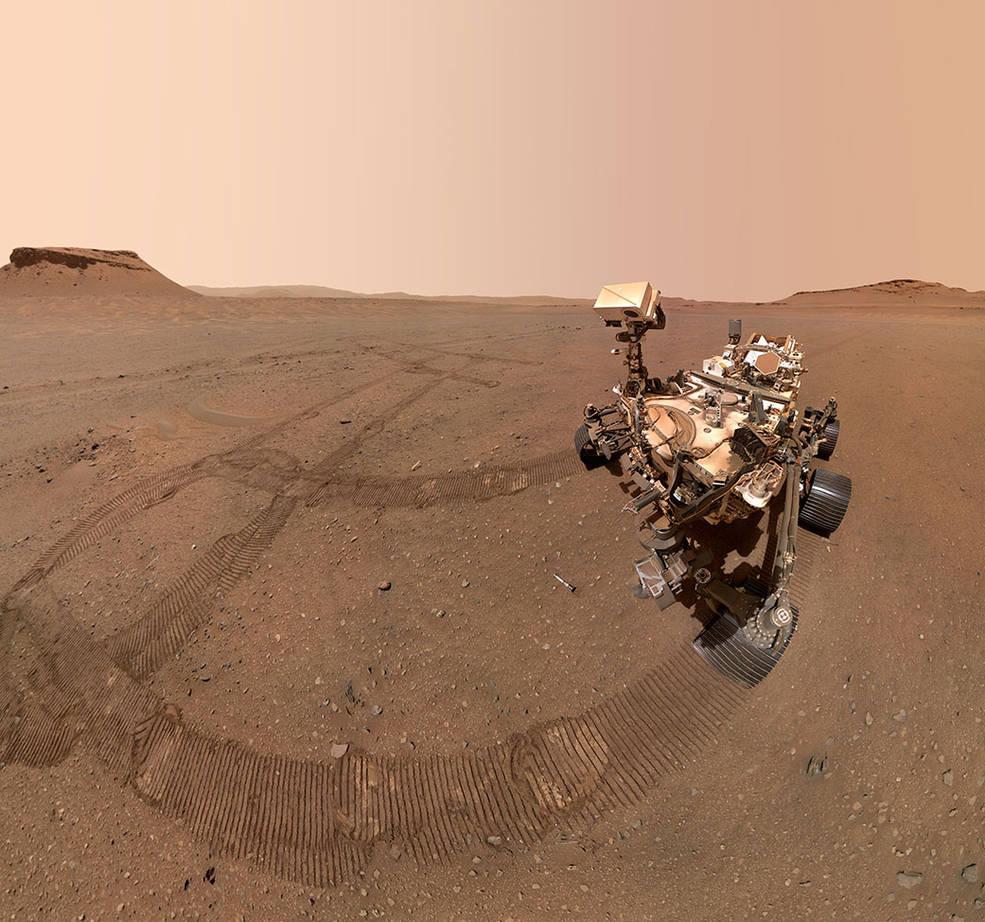
Perseverance
HOUSTON—NASA’s Mars Perseverance rover has completed the caching of 10 samples of rock cores gathered from its Jezero Crater landing site at a location designated Three Forks.
The depot is intended to serve as a backup sample gathering site for a joint NASA/European Space Agency (ESA) Mars Sample Return (MSR) mission intended to deliver samples of red planet surface materials back to Earth to determine if they harbor evidence of past life.
Confirmation that the carefully orchestrated Three Forks sample caching which began on Dec. 21 had been completed was confirmed on Jan. 29, a Jan. 30 update provided by NASA’s Jet Propulsion Laboratory said.
With the Three Forks caching complete, Perseverance will roll on to Jezero’s river delta, where new core samples of rocky materials are to be gathered that are believed to have originated beyond the 28-mi.-wide impact crater that formed about 4 billion years ago and filled with water from the river flow.
NASA and ESA are working to launch the Mars orbiter, lander and ascent and Earth return elements of the MSR mission in late 2027 and 2028. Its cost is an estimated $4.4 billion. The strategy calls for Perseverance to meet up with the MSR lander/ascent rocket elements to hand off samples of the crater and river delta secured in 7-in. titanium tubes and stored on board the rover. The NASA ascent vehicle will launch the samples to a European Mars orbiter, where NASA’s Capture, Containment, and Return System and Earth Entry System is to deliver the samples from Mars orbit to Earth for a descent and recovery planned for 2033.
If Perseverance, which landed at Jezero on Feb. 18, 2021, could not reach the MSL lander, the lander’s two helicopter drones would fly to Three Forks, collect the 10 cached samples and fly them to the MSL lander and ascent vehicle.
The 10 samples cached by Perseverance at Three Forks are duplicates of samples that remain aboard the rover.
Once back on Earth, all of the samples are to be archived at NASA Johnson Space Center’s Astromaterials Acquisition and Curation Office and distributed to researchers with the latest science laboratory technologies for analysis to provide evidence for possible past life on Mars.
The samples cached at Three Forks also include one of the Martian atmosphere and a “witness” tube, which would reveal possible Earthly contamination, though the Perseverance elements were prepared for launch in as pristine a manner as possible to prevent terrestrial contamination.
Three Forks is located on a flat stretch at the base of the raised, fan-shaped river delta through which water is believed to have once flowed into the crater. The sample tubes were deposited in a zigzag pattern about 15 to 50 ft. apart from one another to enhance their recovery. The depot was carefully mapped by the rover so the sample tubes can be recovered even if they become covered in dust, NASA’s status update says.
“With the Three Forks depot in our rearview mirror, Perseverance is now headed up the delta,’’ Rick Welch, Perseverance’s deputy project manager at NASA’s Jet Propulsion Laboratory (JPL), said as part of the update.
“As we ascend the delta into a river setting, we expect to move into rocks that are composed of larger grains from sand to large boulders. Those materials likely originated in rocks outside of Jezero, eroded and then washed into the crater,” explained Caltech’s Ken Farley, the Perseverance mission project scientist.
One of the first stops in the delta campaign has been designated the “Curvilinear Unit,” which is believed to host a sandbar with outcrops of sandstone and perhaps mudstone that could hold evidence of past geological and possible biological processes beyond the large crater.
